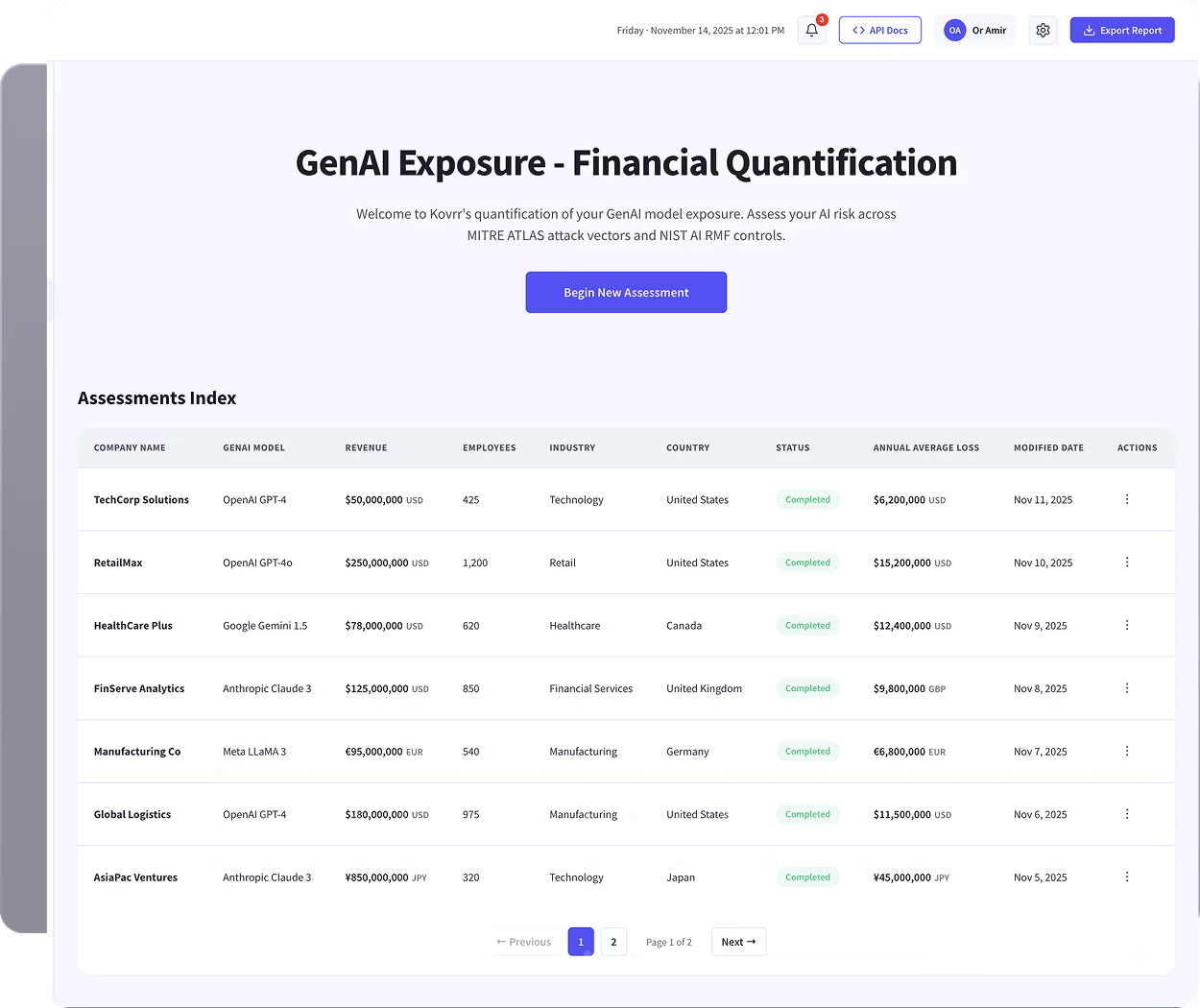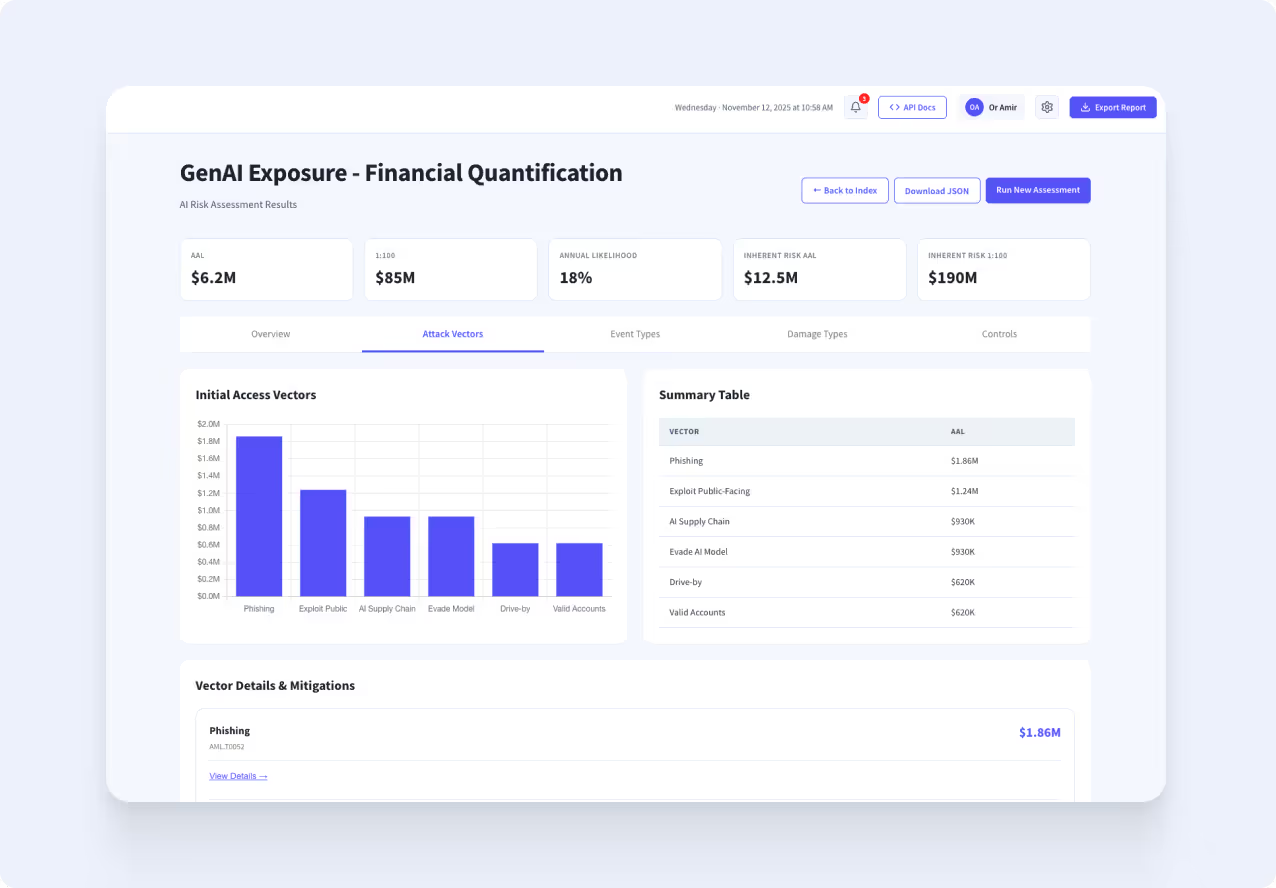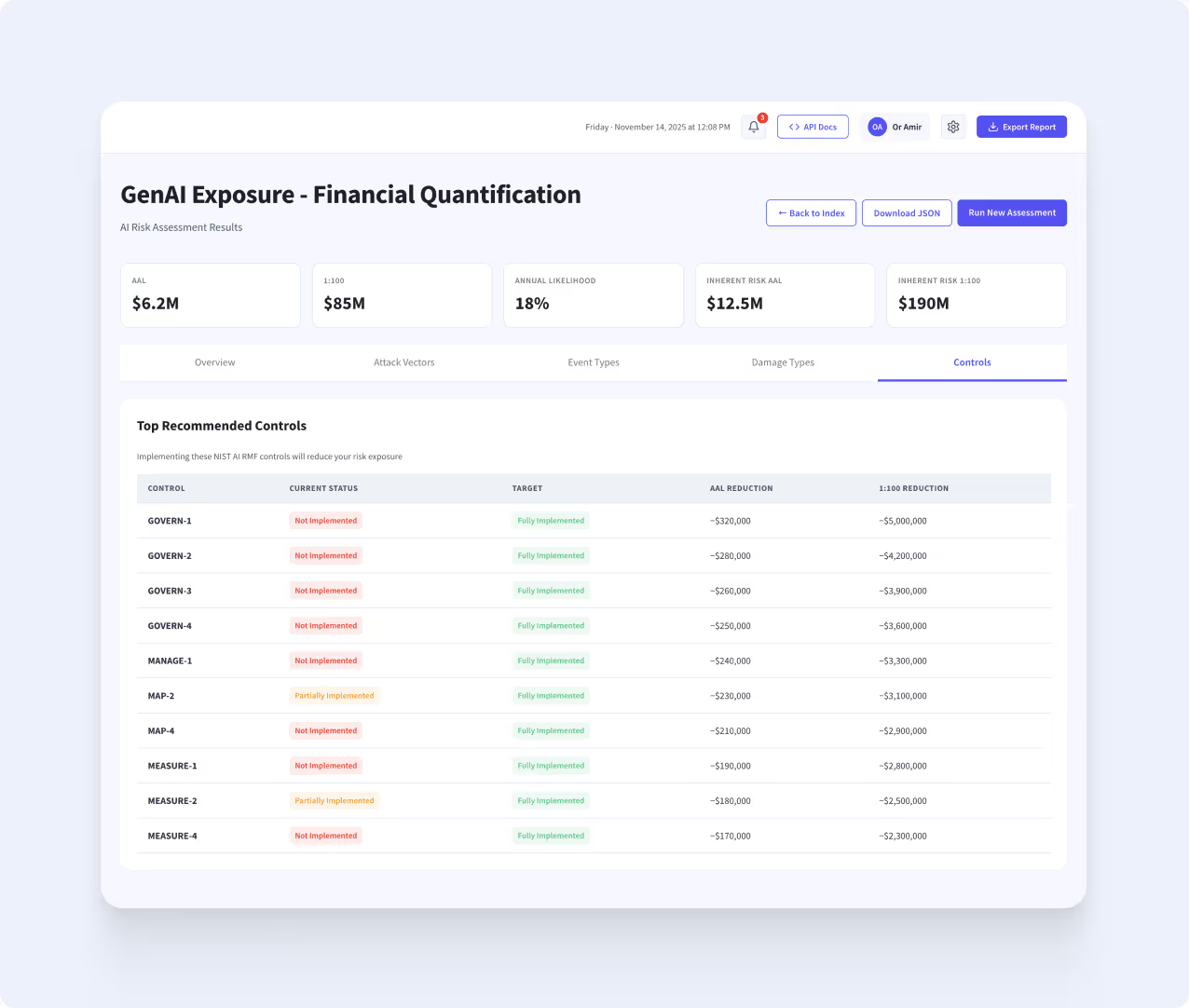Quantify GenAI Risk to Support Confident, Data-Driven Decisions
Kovrr’s AI Risk Quantification module helps organizations measure and manage GenAI risk with precision and scale. Its simulation-based modeling engine calculates the likelihood and potential losses of GenAI-related incidents using industry data, mapped controls, and frequency–severity distributions. The results translate complex exposure into clear financial and operational terms, enabling leaders to prioritize protections, report risk transparently, and strengthen long-term resilience.

Identify business parameters such as industry, revenue, and regulatory obligations to set the baseline for analysis.
Capture model access, data types handled, reliance factors, and existing controls to shape accurate, customized AI risk profiles.
Leverage Kovrr’s quantification engine to calculate incident frequency and severity using tailored threat intelligence.
Examine metrics such as Annualized Loss Expectancy (ALE) and loss exceedance curves, broken down by access vector and event type.
Pinpoint the controls and mitigations that offer the highest reduction in modeled loss exposure and allocate resources accordingly.
The Market Stakes of GenAI Risk Are Rising
GenAI is being deployed faster than risk teams can assess its implications. Frameworks like NIST AI RMF and ISO 42001 define responsible practices, but they don’t quantify how often AI-related incidents might occur or what their real impact could be. Managing GenAI risk now requires data-driven modeling of exposure, giving organizations the ability to prioritize safeguards and demonstrate measurable improvement over time.


AI Risk Quantification
in Practice
Kovrr’s process starts by capturing how GenAI systems are deployed across your business. It incorporates real-world threat intelligence and mapped controls to simulate realistic loss scenarios. The models forecast frequency and severity, producing a dynamic view of AI-related exposure that evolves as environments change. These quantified results form a defensible foundation for prioritizing mitigations and improving governance decisions.
The Value of Quantifying GenAI Risk
Quantification turns GenAI exposure into a practical decision-making asset that supports governance, compliance, and strategic planning.
Communicate AI Risk to Leadership: Express exposure in financial and operational terms that executives understand, enabling transparency and informed decisions.
Prioritize and Prove ROI: Use modeled results to direct investments toward high-impact safeguards and demonstrate measurable improvement over time.
Strengthen GRC Programs: Incorporate quantified findings into governance and compliance processes to guide capital allocation, set risk appetite, and track materiality.
Quantifying GenAI risk brings measurable clarity to governance programs, enabling leaders to act on evidence rather than assumptions.

Need to Assess Your AI Compliance Readiness?
Kovrr’s AI Compliance Readiness module evaluates governance and control maturity for GenAI systems. Built on frameworks like NIST AI RMF and ISO 42001, it identifies readiness gaps and establishes the foundation for measurable, defensible AI risk management.




Kovrr’s AI Risk Quantification FAQ
Schedule AI Risk Quantification DemoWhat is AI Risk Quantification?

AI risk quantification translates GenAI-related exposure into measurable financial and operational terms. Kovrr’s module goes beyond maturity scoring by simulating GenAI-specific scenarios, calculating their likelihood and potential loss impact. The outputs include modeled metrics such as Annualized Loss Expectancy (ALE) and loss exceedance curves, giving leaders a quantitative foundation for prioritizing mitigation and investment.
What types of AI systems can be analyzed with AI risk quantification?

Kovrr's AI risk quantification solution can model risks from a wide range of AI systems, including generative AI (GenAI) platforms, predictive analytics models, and decision-support systems. Whether AI tools are customer-facing, embedded in operations, or powering internal processes, Kovrr's AI Risk Quantification will evaluate how their deployment directly affects an organization's exposure and resilience to AI-related loss scenarios.
Can Kovrr’s AI Risk Quantification measure both financial and operational impacts?

Yes. While many tools only produce a score or limit insights to financial loss forecasts, Kovrr’s AI Risk Quantification module also models operational consequences such as service outages or the number of compromised data records. Losses can be broken down by event type and access vector, giving teams a detailed view of how incidents unfold and where they hit hardest. This combined perspective enables organizations to address both the monetary and functional effects of AI-related incidents for stronger GenAI risk management practices.
How can GenAI risk quantification results be used in board and executive reporting?

Kovrr’s results help GRC and risk teams translate technical GenAI exposure into actionable business insight. Reports quantify potential losses, show financial and operational impact, and compare event types, access vectors, and probability ranges. This structure enables data-backed trade-offs, clearer prioritization, and stronger alignment between AI risk management and enterprise risk appetite.
